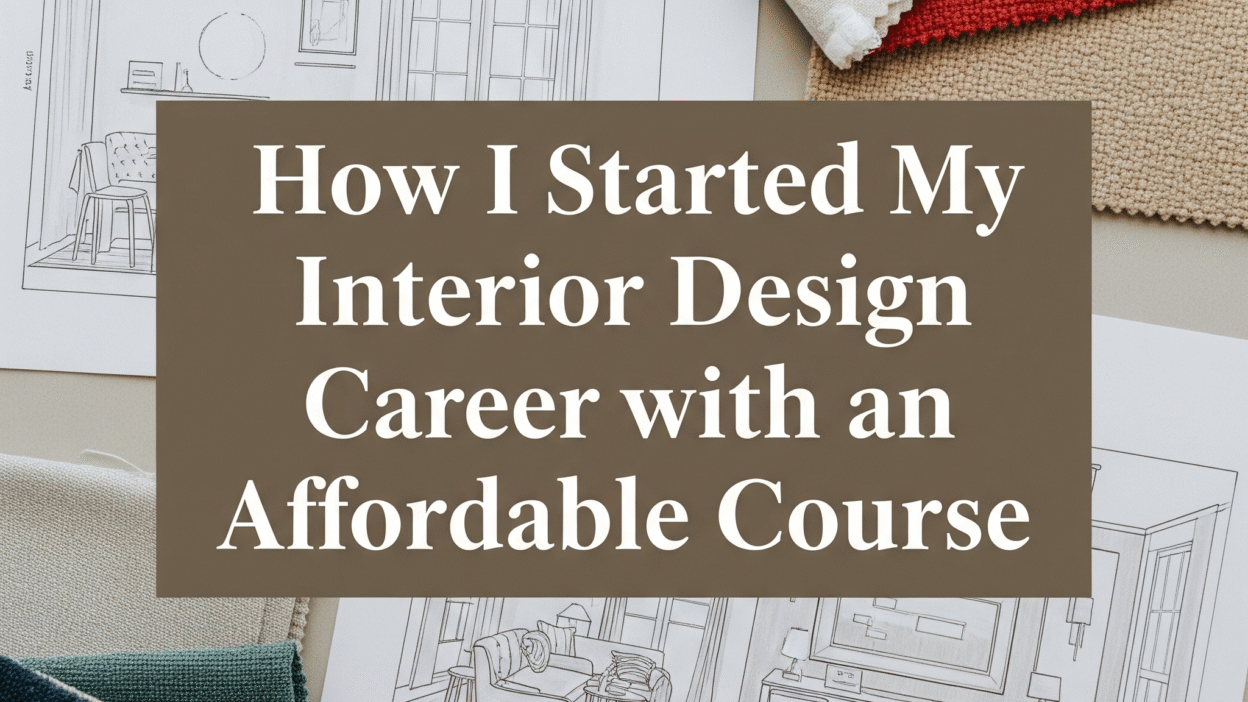Interior design was always very near and dear to my heart. I used to spend hours re-arranging my room, dreaming up improved ways of using the space or combining colors and textures. But when I finally decided to make that love an actual career, I had no idea where to start—particularly on a shoestring budget.
I assumed that interior design was only for those who could afford expensive design schools or long degrees. However, I soon discovered there are several affordable interior design courses that not only teach the basics but also help you develop real skills. Here’s how I started my interior design career without spending a fortune—and how you can too.
Finding the Right Course
When I began looking into interior design courses, I was looking for three key things:
- Cost
- Practical skills taught
- Flexibility (online or part-time)
I discovered a brief, low-cost course that taught the principles of design interior designers employ on a daily basis. It was an online certificate course, cheap and self-paced, which meant I could study while continuing to work part-time.
I didn’t immediately go on to a degree. I instead used this course to lay some good groundwork—something that allowed me to test and see if interior design was really something I was suited for.
What the Course Taught Me
One of the most excellent aspects of cheap courses is that they concentrate on the fundamentals. My course taught the following main areas:
- Elements and Principles of Interior Design
I was taught about line, shape, colour, texture, and space—elements of design interior design relies on. These fundamentals taught me how to achieve balance, harmony, and functionality in any space.
- Design Thinking and Layout Planning
I learned how designers think. From space planning to making mood boards, I was taught to think realistically and imaginatively simultaneously.
- Colour Theory and Lighting
Realizing how light and colour can alter the mood of a space transformed my perception of every room.
- Client Briefs and Presentation
Although in a budget course, I was still able to complete mock design briefs and present my solutions—something that I now do with all projects.
Applying What I Learned
As soon as I completed the course, I began taking small steps towards gaining experience:
- I remodeled my bedroom utilizing what I had learned regarding color, texture, and furniture placement.
- I assisted a family friend with planning her café interior—no charge but excellent practice.
- I developed a portfolio with before-and-after photographs of my personal and volunteer work.
- These experiences put genuine value on my resume and gave me the confidence to pursue internships.
Investigating Interior Design Specializations
After I entered the field, I realized there are plenty of interior design specializations you can pursue. Even with a fundamental course, I was able to figure out what interested me the most.
Some of the specializations I encountered were:
- Residential Interior Design – designing apartments and houses
- Commercial Design – office buildings, shops, cafés
- Sustainable Design – environmentally-friendly materials and green spaces
- Set and Exhibition Design – for events, movies, or theatre
Later, I decided to specialize in residential design because I enjoyed the one-on-one interaction with clients and the independence in creativity.
Internships and Freelance
After taking the affordable course and creating my portfolio, I sent applications for several internships. I was hired by a small design firm that appreciated my eagerness to learn and enthusiasm.
The experience in the studio taught me more than I would have ever learned from texts. I worked with designers, sourced materials, went to client meetings, and had my first experience of what a real design career is all about.
Later on, I began to take on little freelance jobs—room designs, colour consultations, and even furniture organizing for rental properties.
Why Affordable Courses Work
Many people think affordable means “less effective,” but that’s not true in the case of interior design. In fact, the right affordable interior design courses can give you:
- A solid foundation in theory and design concepts
- Confidence to take on projects
- A starting point to explore interior design specializations
- The ability to build a strong portfolio
Of course, more learning is always beneficial. But beginning small provided me with flexibility and direction I required without feeling overwhelmed.
Final Thoughts: You Can Start Small and Dream Big
In retrospect, I’m happy that I didn’t wait for the “perfect” moment or the “perfect” course. I started with what I could and utilized every chance as a stepping stone to learn and develop.
If you’re a design enthusiast who’s concerned about expense, don’t let that stop you. Begin with budget-friendly interior design courses, discover the principles of design interior design is based on, and gradually learn your way along various interior design specialties.
It’s not where you begin—it’s how committed you are to continue learning and growing. With imagination, practice, and determination, a career in interior design is totally within reach.



